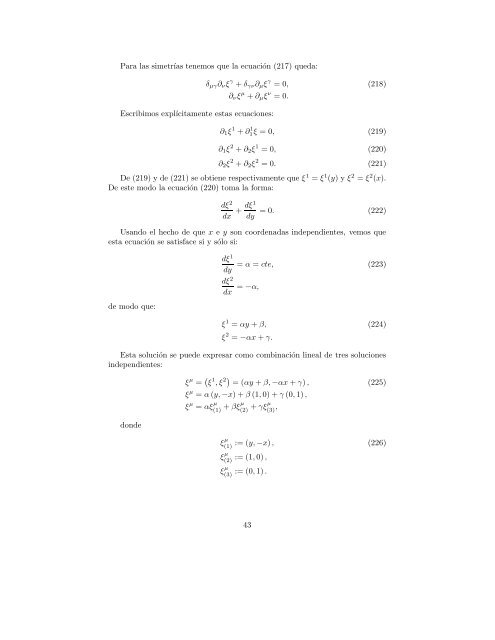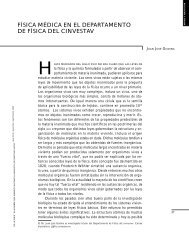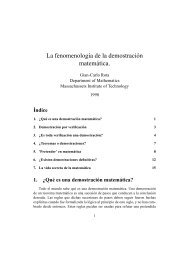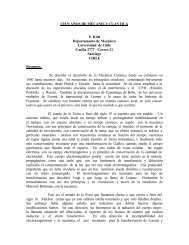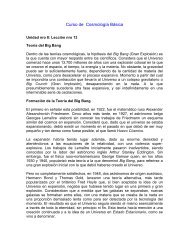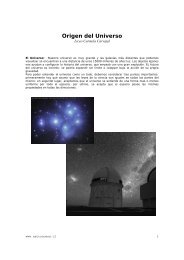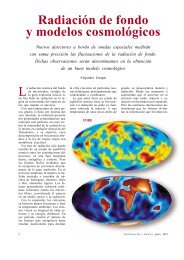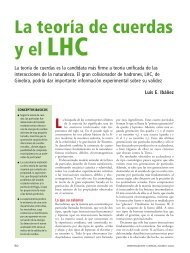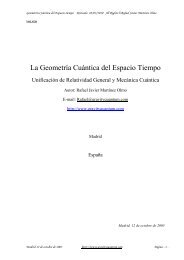Análisis Tensorial y GeometrÃa de Riemann
Análisis Tensorial y GeometrÃa de Riemann
Análisis Tensorial y GeometrÃa de Riemann
You also want an ePaper? Increase the reach of your titles
YUMPU automatically turns print PDFs into web optimized ePapers that Google loves.
Para las simetrías tenemos que la ecuación (217) queda:δ µγ ∂ ν ξ γ + δ γν ∂ µ ξ γ = 0, (218)∂ ν ξ µ + ∂ µ ξ ν = 0.Escribimos explícitamente estas ecuaciones:∂ 1 ξ 1 + ∂ 1 1ξ = 0, (219)∂ 1 ξ 2 + ∂ 2 ξ 1 = 0, (220)∂ 2 ξ 2 + ∂ 2 ξ 2 = 0. (221)De (219) y <strong>de</strong> (221) se obtiene respectivamente que ξ 1 = ξ 1 (y) y ξ 2 = ξ 2 (x).De este modo la ecuación (220) toma la forma:dξ 2dx + dξ1dy= 0. (222)Usando el hecho <strong>de</strong> que x e y son coor<strong>de</strong>nadas in<strong>de</strong>pendientes, vemos queesta ecuación se satisface si y sólo si:<strong>de</strong> modo que:dξ 1= α = cte, (223)dydξ 2dx = −α,ξ 1 = αy + β, (224)ξ 2 = −αx + γ.Esta solución se pue<strong>de</strong> expresar como combinación lineal <strong>de</strong> tres solucionesin<strong>de</strong>pendientes:don<strong>de</strong>ξ µ = ( ξ 1 , ξ 2) = (αy + β, −αx + γ) , (225)ξ µ = α (y, −x) + β (1, 0) + γ (0, 1) ,ξ µ = αξ µ (1) + βξµ (2) + γξµ (3) ,ξ µ (1)ξ µ (2)ξ µ (3):= (y, −x) , (226):= (1, 0) ,:= (0, 1) .43


